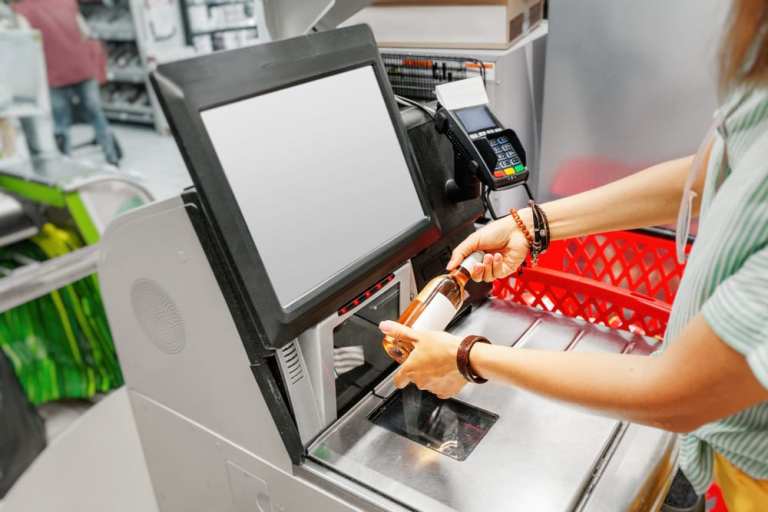
There’s not much argument against self-checkout systems as a means of improving the customer experience. But at least a temporary blowback to the technology has begun, some of which has landed the issue in court and some of which has led Walmart and other retailers to rethink how it is used.
According to a report from The Wall Street Journal, Walmart has struggled with negative customer feedback about self-checkout, as well as the weight-based system that allowed for increased shrinkage. New cameras have been adopted by self-checkout suppliers to help address the problem. In the meantime, shoppers seem to be embracing self-checkout – however, opposition from the workforce that could be displaced by the technology is growing louder.
In fact, in Oregon, the matter has gone to court. The lobby group Oregon Business Industry (OBI) as well as the local AFL-CIO petitioned the Oregon Supreme Court late last month to limit each grocery store to two self-checkout kiosks. The petition would need over 100,000 signatures to get on the November ballot.
“We have been consistently concerned about the impacts of technology and automation on the livelihoods of working people, especially when they have no voice in how technology is used in their workplaces,” Graham Trainor, president of the Oregon AFL-CIO, said in a statement. “You can see expansion of self-checkout machines in stores across the country and in Oregon.”
In its complaints, the AFL-CIO has gone beyond the loss of jobs. It claims that self-checkout kiosks make customers feel “socially isolated, particularly elderly people,” and that the technology makes it easier for underage customers to buy alcohol and for customers to shoplift.
Despite the hiccups, the WSJ report says shoppers are embracing self-checkout. Target has self-checkout in 1,700 of its stores and says that 33 percent of its customers use them. And an executive from Albertson’s says shoppers prefer self-checkout, even if they don’t use it every time. According to the WSJ report, Walmart and Target are adding more self-checkouts in new or remodeled stores. Costco has “pulled back on a previous test of self-checkouts,” but has added them in 120 of its 546 stores.
The PYMNTS report The Future of Unattended Retail shows a tremendous upside for self-checkout, although the percentage of consumers who have used it is still low. Many consumers who use unattended retail channels – from vending machines to self-service kiosks to cashierless stores – say they do so because such solutions are faster (cited by 49.4 percent) and offer shorter lines (34.7 percent). Thirty-three percent say they use these channels because they like to take their time while shopping without talking to employees.
The report’s key findings show that many consumers would like to make unattended retail purchases, but only 11.8 percent of interested consumers currently make such purchases. Approximately 48.6 million consumers (20.6 percent of the U.S. population) are interested in non-traditional unattended shopping experiences, but just 14.4 million (61 percent) actually make them. The disconnect between consumers’ interest in and usage of such solutions suggests that some consumers do not use them simply because they are not available.
On the supply side, NCR has produced a report that places self-checkout in the context of the software-driven store, calling it part of an end-to-end ecosystem that integrates operations into the point-of-sale (POS) system. The report shows that the automated store speeds up POS by 10 percent and increases customer satisfaction. Based on test stores using its system, it estimates that it can drive an incremental profit of $6.39 million over a three-year period “through improved revenue opportunities and a reduction in cart abandonment.”
“In the age of the customer, it’s not just online retailers that are battling to provide customers with the most seamless, frictionless experience,” said NCR. “With eCommerce giants encroaching into the brick-and-mortar space, traditional retailers are also under pressure to innovate and digitize store operations.”
Self-checkout has too big of an upside to be derailed. As companies like Amazon and Foxtrot roll out stores with no humans, they will become more accepted. There will be technology hiccups, as well as ethical issues to solve, but you can bet that problems will continue and solutions will be applied.